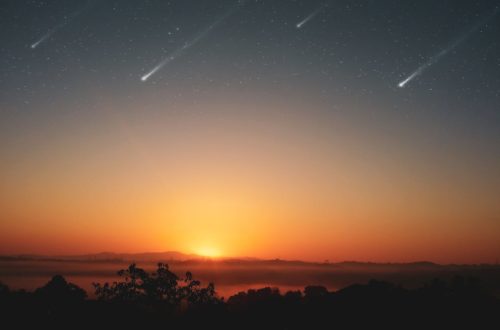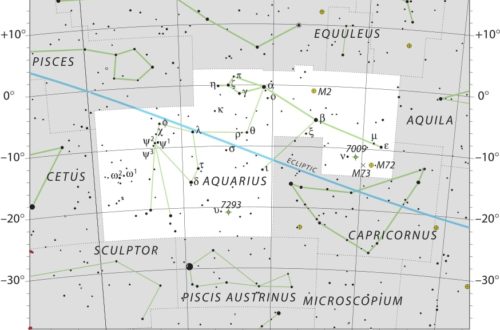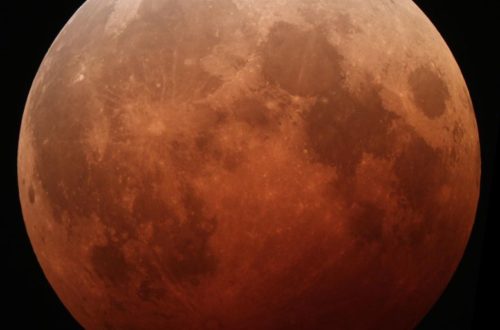Stargazing Calendar for December 2024
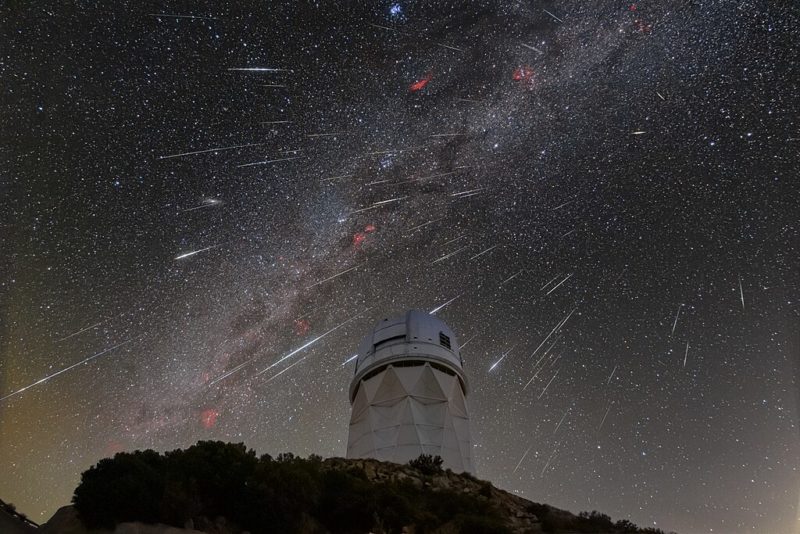
Looking for the December 2025 stargazing calendar?
December 2024 offers a thrilling experience for astronomy enthusiasts, as stargazing this month reveals mesmerizing meteor showers, planetary alignments, and breathtaking views of vibrant nebulas.
Would you like to be notified of stargazing events?
List of Meteor Showers in December 2024
- Antihelion Source: Start on December 10; multiple peaks; end September 10.
- Northern Taurids: Start on October 20; peak on November 12; end on December 10.
- November Orionids: Start on November 13; peak on November 28; end on December 6.
- Phoenicids: Start on November 28; peak on December 2; end on December 9.
- December φ-Cassiopeids: Start on December 1; peak on December 6; end on December 8.
- Puppid-Velids: Start on December 1; peak on December 7; end on December 15.
- Monocerotids: Start on December 5; peak on December 8; end on December 20.
- σ-Hydrids: Start on December 3; peak on December 11; end on December 15.
- Geminids: Start on December 4; peak on December 14; end on December 17.
- Comae Berenicids: Start on December 12; peak on December 15; end on December 23.
- December Leonis Minorids: Start on December 5; peak on December 20; end on February 4.
- Ursids: Start on December 17; peak on December 22; end on December 26.
- Quadrantids: Start on December 26; peak on January 4; end on January 12.
We also have a complete list of meteor showers for the entire year here.
List of Planetary Conjunctions in December 2024
- Conjunction of the Moon and Venus in Sagittarius on December 4.
- Conjunction of Ceres and Pluto in Capricornus on December 5.
- Conjunction of Venus and Pluto in Capricornus on December 7.
- Conjunction of the Moon and Saturn in Aquarius on December 8.
- Conjunction of Venus and Ceres in Capricornus on December 8.
- Conjunction of the Moon and Jupiter in Taurus on December 14.
- Conjunction of the Moon and Mars in Cancer on December 18.
- Conjunction of the Moon and Mercury in Ophiuchus on December 25.
December 2: Phoenicid meteor shower peak
The Phoenicids are a variable meteor shower. Although the peak is on December 2, some meteors could also be spotted between November 28 and December 9.
The meteors will radiate from the constellation of Phoenix at the rather slow average speed of 18 km/s. Fortunately stargazing conditions will be quite close to ideal this beginning of the month of December 2024 because the Moon will be only a one day old waxing crescent at 1%.
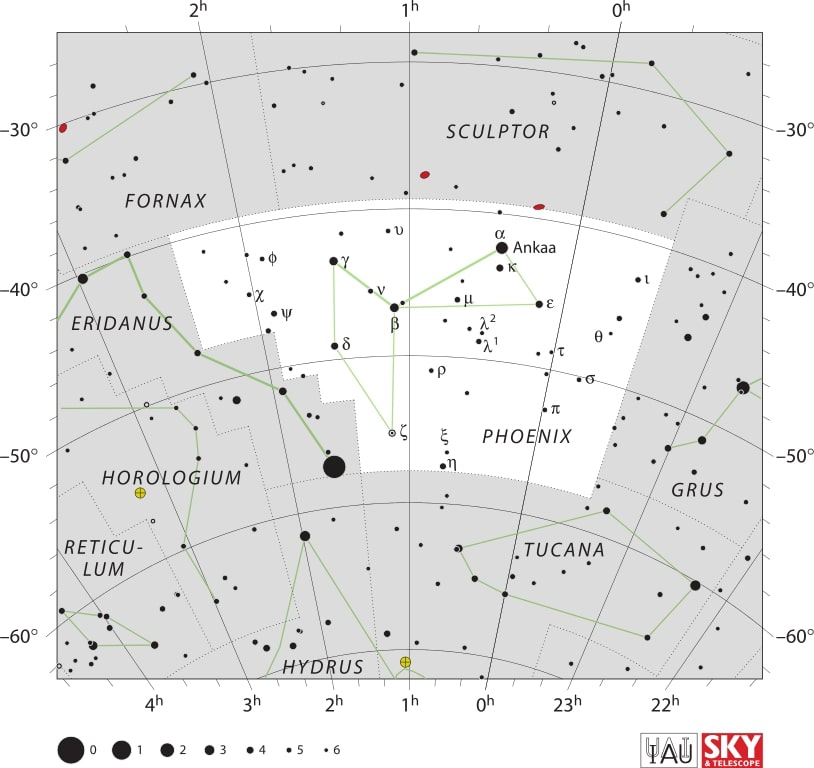
December 4: Conjunction of the Moon and Venus
The Moon and Venus will be at conjunction by sharing the same right ascension and passing within 2°15′ of each other.
Around an hour later, the two bodies will also make a close approach (appulse) reaching 2°11′ from each other, but no longer sharing the same right ascension.
Look for the two bodies in the constellation of Sagittarius. The Moon will be a very thin waxing crescent (17%) at 3 days old and will not interfere much. Despite this, the Moon will still be at apparent magnitude of -10.5, while Venus will be at magnitude -4.2.
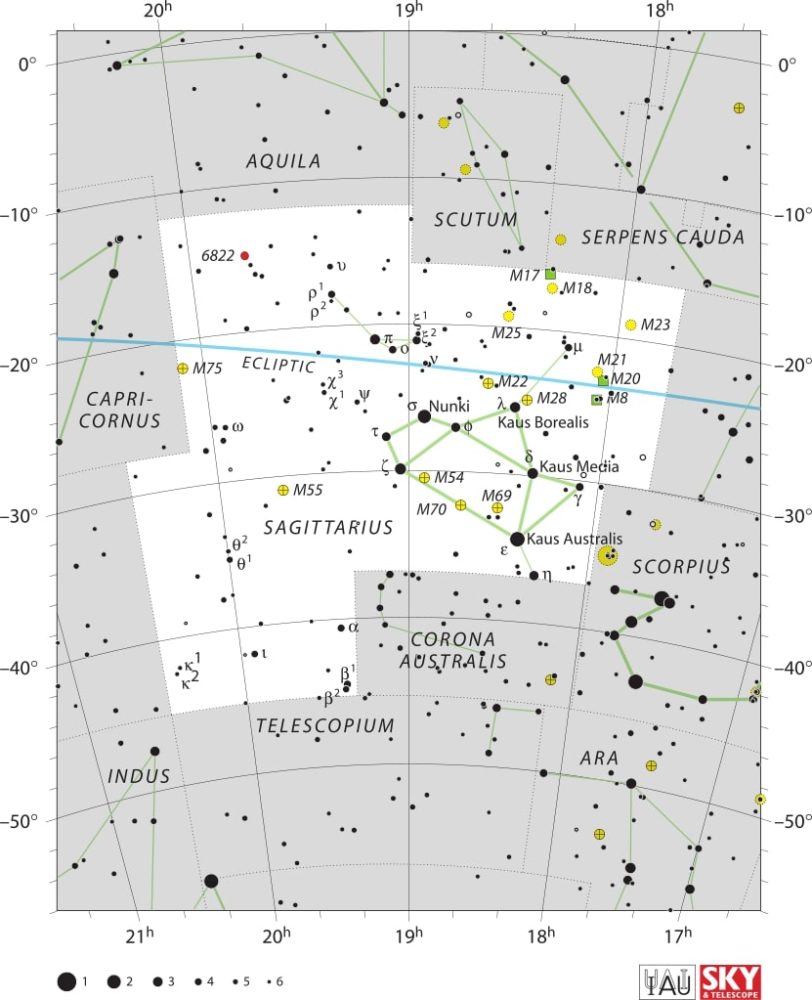
December 5: Conjunction of Ceres and Pluto
The dwarf planets Ceres and Pluto will reach conjunction passing within 3°50′ of each other while sharing the same right ascension.
Ceres will be at apparent magnitude 9.2 and Pluto at magnitude 15.2 both in the constellation of Capricornus. Given how dim these two dwarf planets are, a telescope would be recommended. On the other hand, they will be too widely separated to fit within the field of view of a telescope, but will fit with binoculars. However only Ceres can be seen with binoculars, so it’s a moot point. At least the Moon won’t interfere much with observations as it will be a 4 days old waxing crescent at 26%.
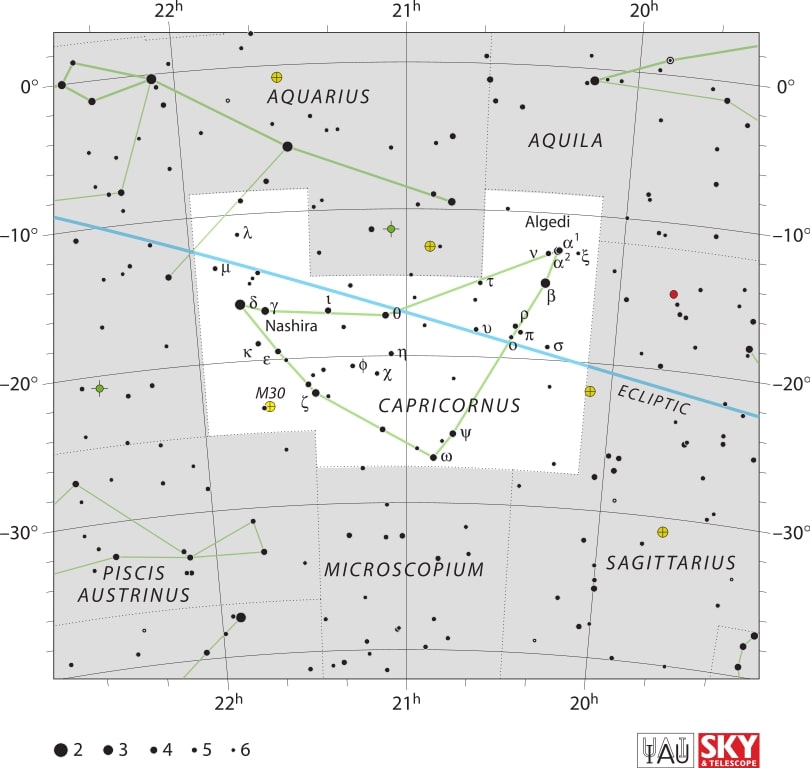
December 6: December φ-Cassiopeid meteor shower peak
The December Phi-Cassiopeids, a recently discovered small variable rate meteor shower, will peak on December 6.
Some meteors may also be spotted between December 1 and 8. They will radiate from the constellation of Cassiopeia at the rather slow speed of 16 km/s on average.
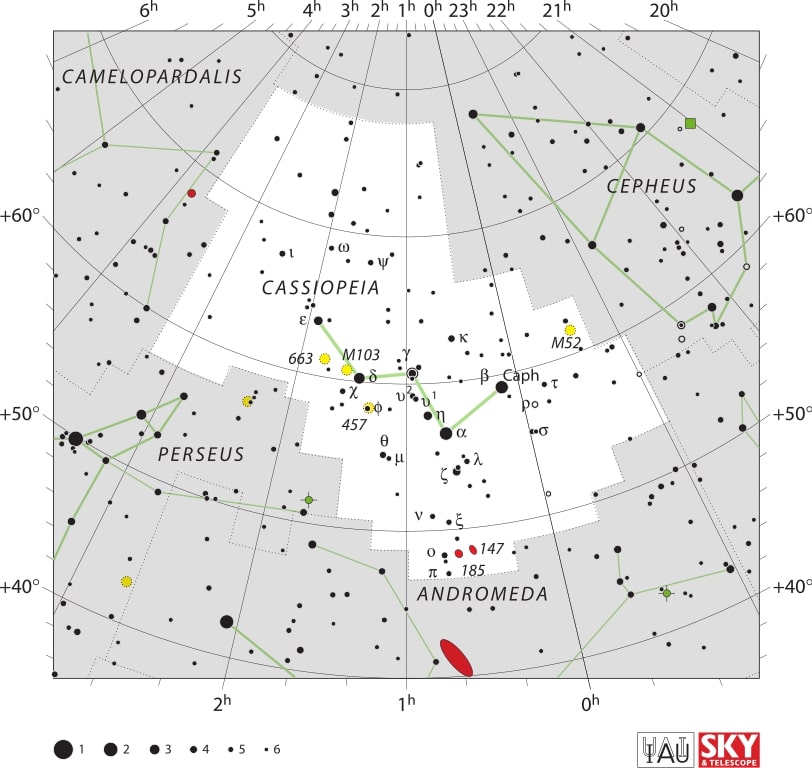
December 6: Jupiter at perigee
The perigee is the point in the orbit of Jupiter at which it is nearest to the Earth. It will pass as close as 4.09 AU of us and reach a maximum brightness of apparent magnitude -2.8. Look in the constellation of Taurus. The Moon will be 5 days old or waxing crescent at 31%.
At every perigee there is also an opposition at nearly the same time. Jupiter will be at opposition on December 7.
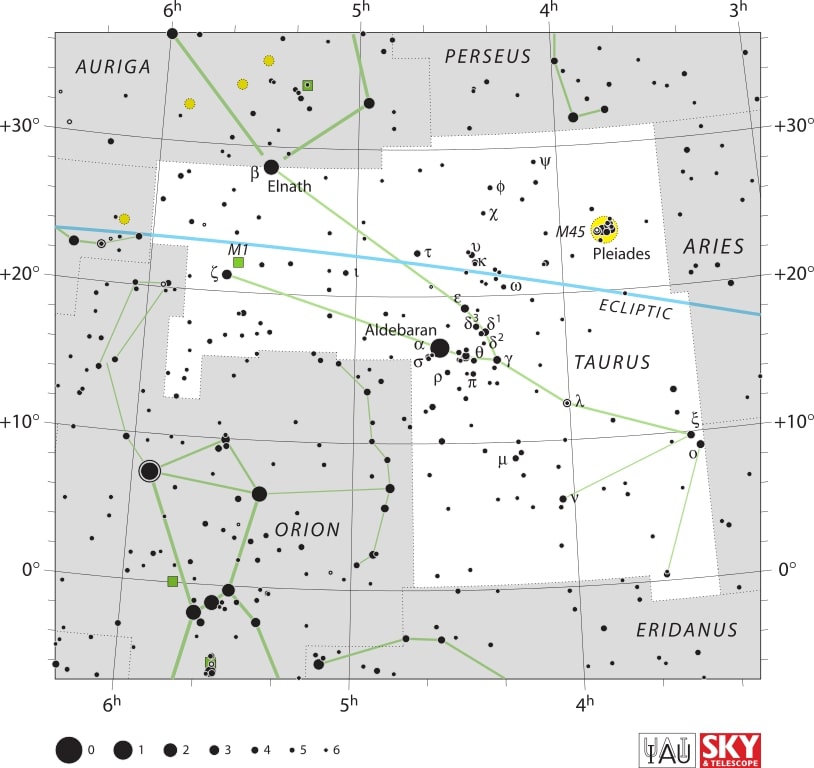
December 6: Puppid-Velid meteor shower peak
The Puppid-Velids will peak with 10 meteors per hour on average (zenithal hourly rate), assuming ideal viewing conditions. Fortunately the viewing conditions will be decently close to ideal because the Moon will be a 5 days old waxing crescent at 37%.
Some meteors can also be seen between December 1 and 15, radiating from the constellation of Vela at the average speed of 40 km/s.
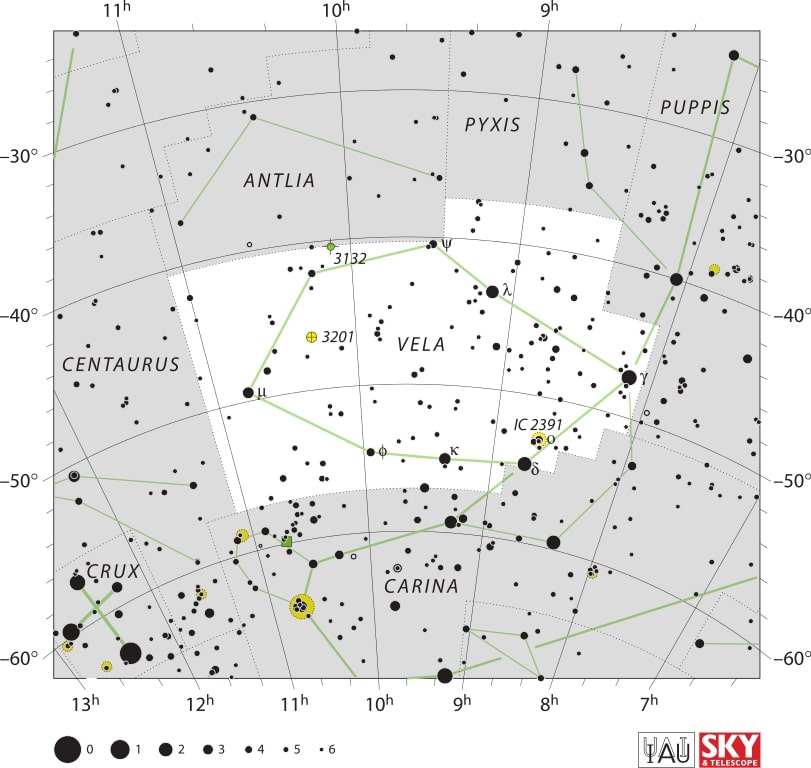
December 6: Mars enters retrograde motion
Mars will begin retrograde motion, which means it will stop traveling eastward through the constellations and instead turn to travel west. All of the outer planets in the solar system periodically experience this orientation reversal, which occurs a few months before they reach opposition.
Ancient observers were troubled by retrograde motion because it didn’t fit with their belief in uniform circular orbits around the Earth. The phenomenon is actually due to Earth’s orbit around the Sun, which shifts our perspective and causes planets to appear to move back and forth in the sky while continuing their overall eastward path through the constellations.
Mars can be spotted in the constellation of Cancer with an apparent magnitude of -0.6.
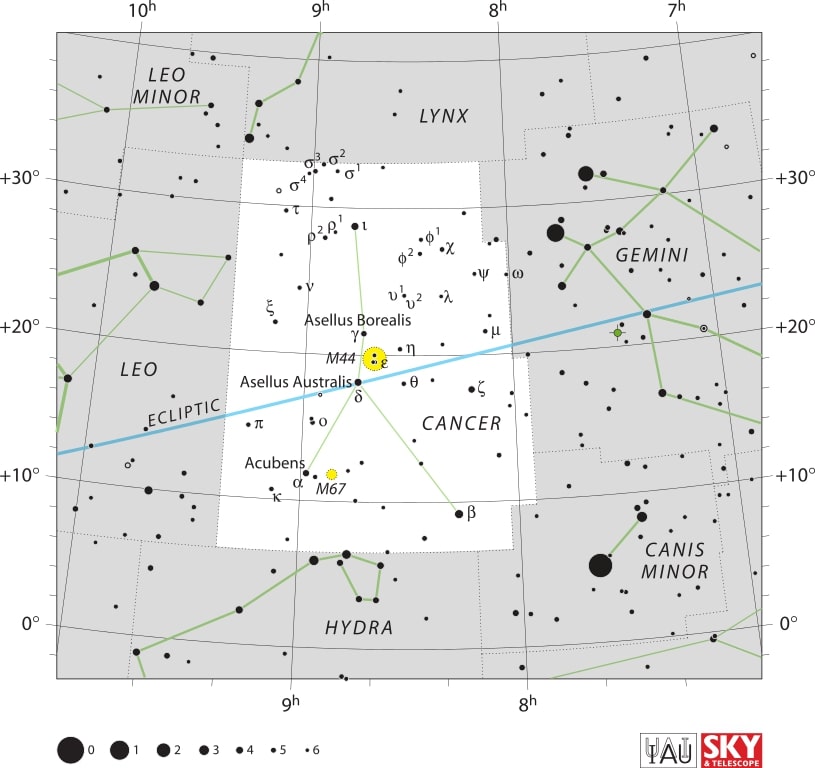
December 7: Conjunction of Venus and Pluto
Venus and dwarf planet Pluto will reach conjunction passing within 53′ of each other while sharing the same right ascension.
Venus will be at apparent magnitude -4.2 and Pluto at magnitude 15.2 both in the constellation of Capricornus. (Constellation map already displayed above, when discussing the Conjunction of Ceres and Pluto on December 5.) A telescope would be needed to see Pluto. At least the Moon won’t interfere that much with observations as it will be a 6 days old waxing crescent at 45%.
December 7: Neptune ends retrograde motion
Neptune will end retrograde motion, which means it will stop traveling westward through the constellations and instead return to the more usual eastward motion instead.
Neptune can be spotted in the constellation of Pisces with an apparent magnitude of 7.9.
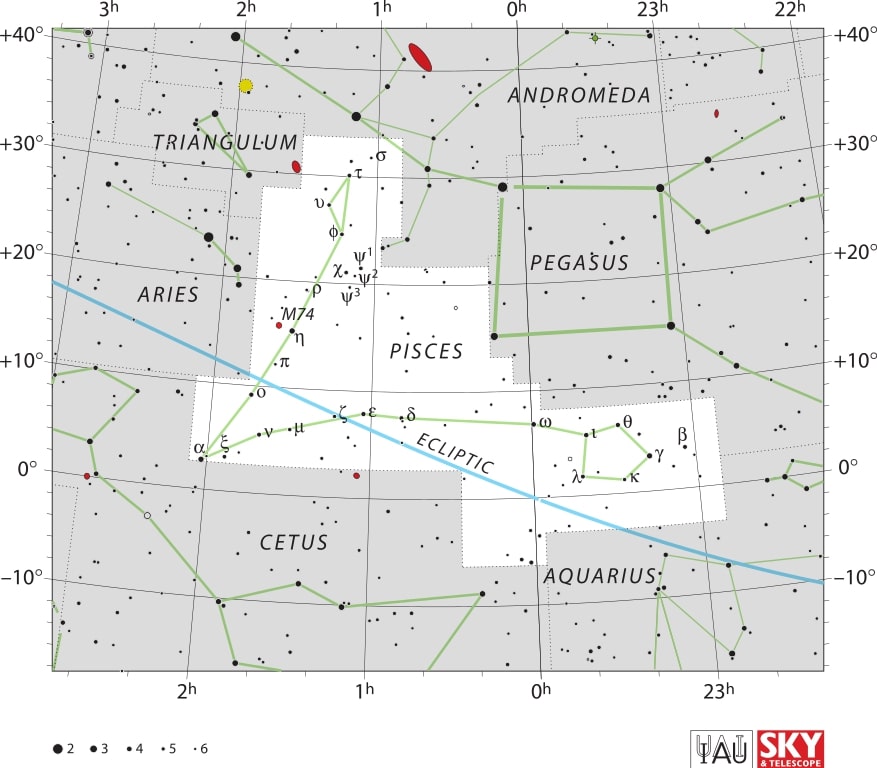
December 8: Conjunction of the Moon and Saturn
The Moon and Saturn will reach conjunction passing within 18′ of each other while sharing the same right ascension.
At around the same time the two bodies will also make a close approach (appulse) reaching 16.3 arcminutes from each other, but not sharing the same right ascension. In some parts of Japan and eastern Philippines this distance will be so close as to lead to a lunar occultation of Saturn, meaning the Moon will pass in front of Saturn thereby hiding it from view temporarily.
The Moon will be at apparent magnitude -11.9 and Saturn at magnitude 0.8 both in the constellation of Aquarius. The Moon will be 7 days old waxing gibbous at 52%.
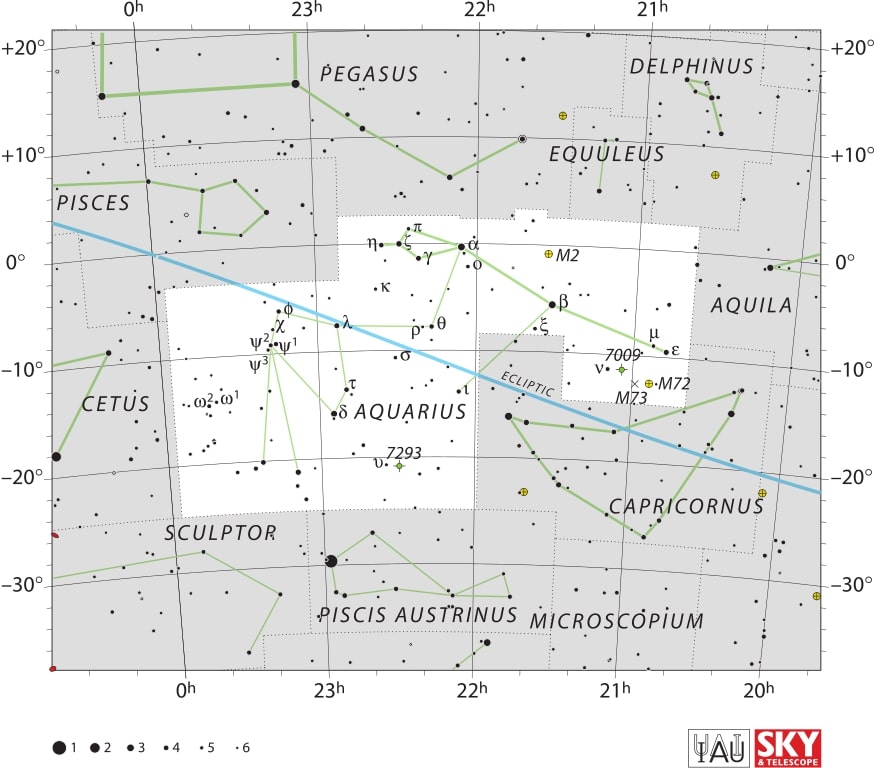
December 8: Conjunction of Venus and Ceres
Venus and dwarf planet Ceres will reach conjunction passing within 4°44′ of each other while sharing the same right ascension.
Venus will be at apparent magnitude -4.2 and Ceres at magnitude 9.2 both in the constellation of Capricornus. (Constellation map already displayed above, when discussing the Conjunction of Ceres and Pluto on December 5.) The two bodies will be too widely separated to fit within the field of view of a telescope, but will fit with binoculars. The Moon will be 7 days old waxing gibbous at 54%.
December 8: Monocerotid meteor shower peak
The Monocerotids are a small meteor shower with 2 meteors on average during the peak if conditions are perfect. Some meteors could also be spotted between December 5 and 20.
The meteors will appear to radiate from the constellation of Monoceros at the average speed of 41 km/s.
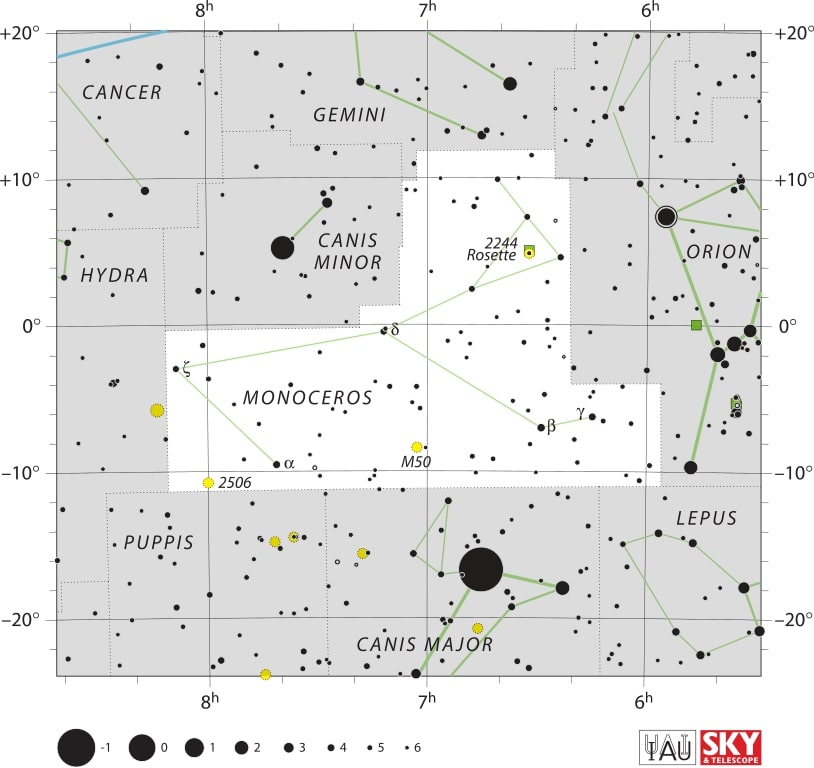
December 11: σ-Hydrid meteor shower peak
The Sigma Hydrids are a small meteor shower with 3 meteors on average during the peak if conditions are perfect, which unfortunately won’t be the case due to the Moon being 10 days old waxing gibbous at 88%.
Some meteors could also be spotted between December 3 and 15. They will appear to radiate from the constellation of Hydra at the average speed of 58 km/s.
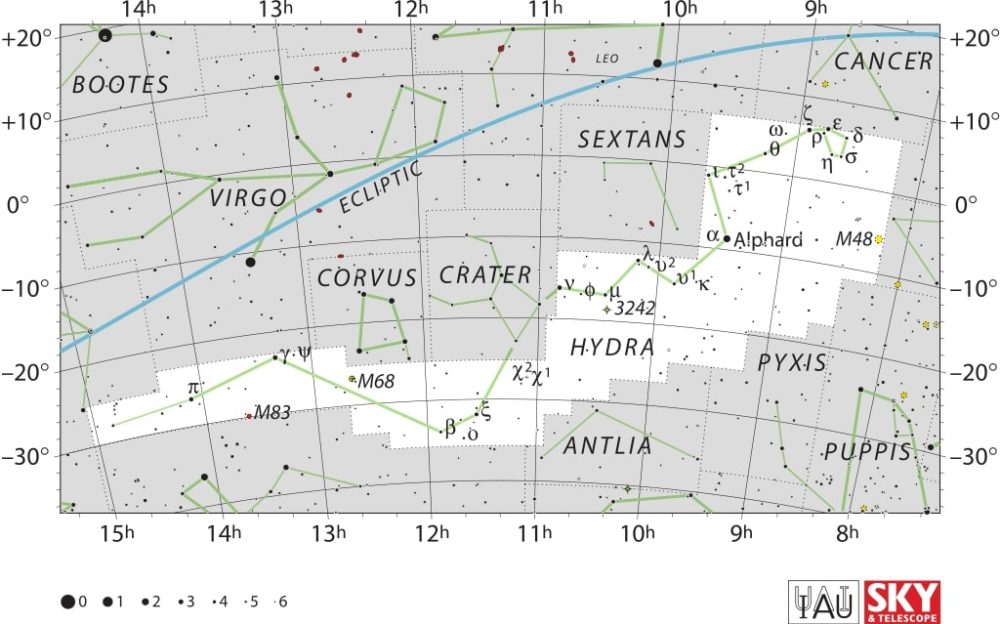
December 12: Large Magellanic Cloud at its highest point in the sky
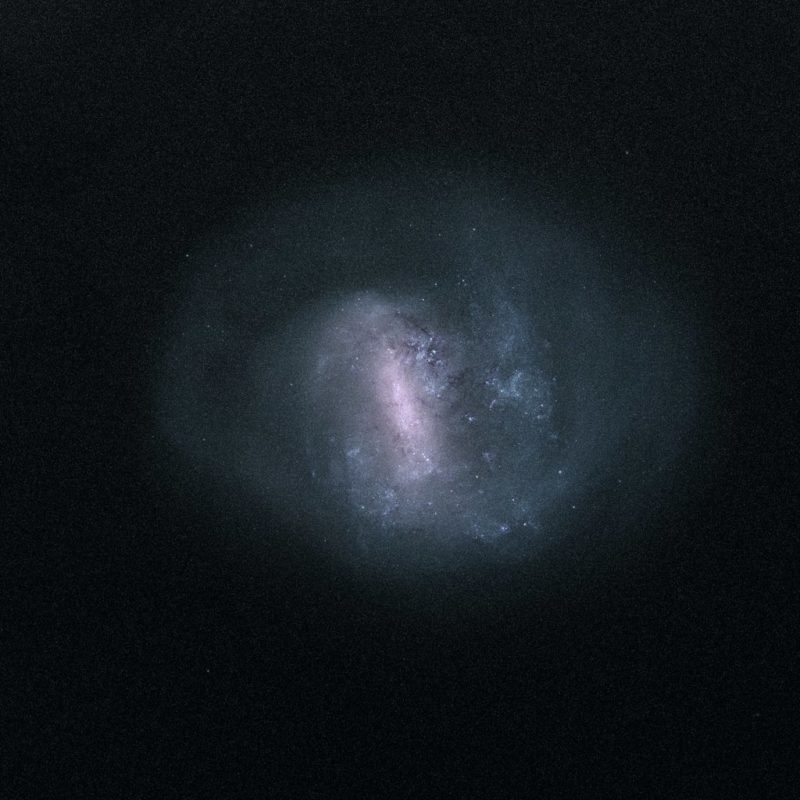
The Large Magellanic Cloud (LMC) is a satellite galaxy of the Milky Way and the fourth-largest galaxy in the Local Group. It is located 163,000 light-years from us. The galaxy will reach its highest point in the sky at around midnight local time.
With an apparent magnitude of 0.9, the LMC can be seen with the naked eye, but for better results I would recommend at least a pair of standard binoculars. Can you image that this small little cloud is home to 20 billion stars? Look in the constellation of Dorado. Unfortunately, the Moon will start to interfere with stargazing quite a bit this middle of December 2024 because it will be 11 days old waxing gibbous at 95%.
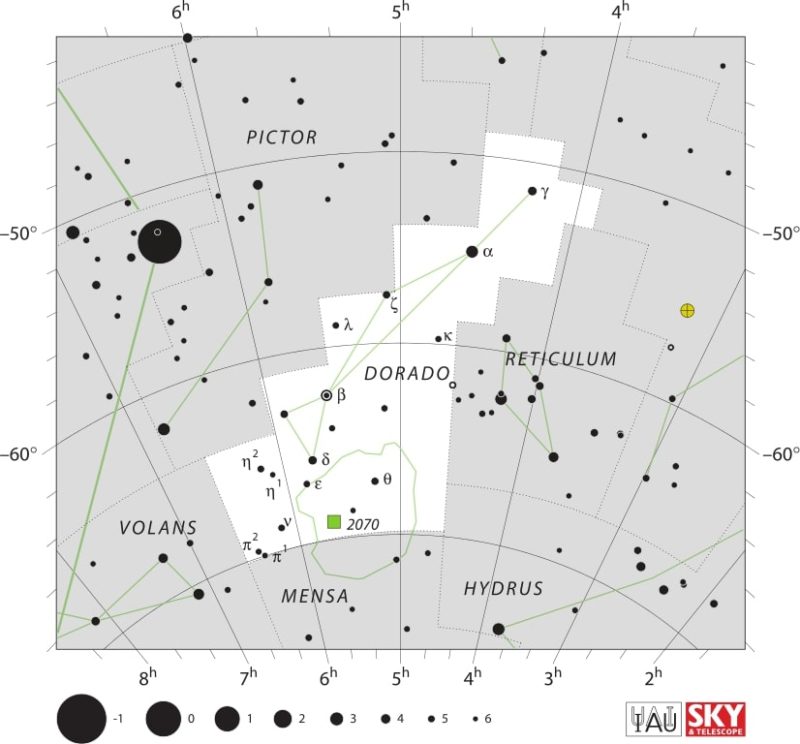
December 13: Close approach of the Moon and the Pleiades
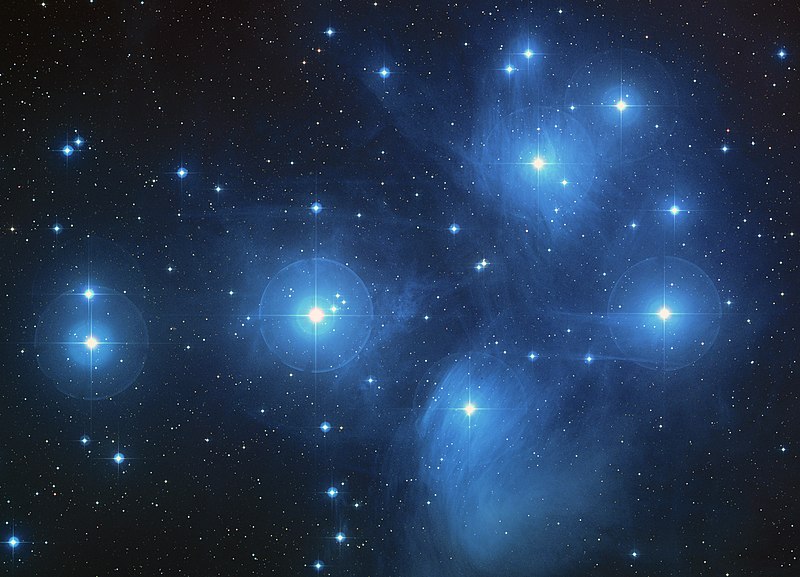
The Moon and the Pleiades (also known as M45 or Messier 45) will make a close approach, passing within only 9.8 arcminutes of each other.
Both objects will be in the constellation of Taurus with the Moon being at apparent magnitude -12.7 ; and the Pleiades at 1.3. (Constellation map already displayed above, when discussing Jupiter at perigee on December 6.) The Moon will be 12 days old and waxing gibbous at 98%.
December 14: Geminid meteor shower peak
The Geminids (see featured image at the top of the article) are one of the largest meteor showers of the year with as many as 120 meteors per hour on average if conditions are ideal. Unfortunately, given that the Moon will be 13 days old waxing gibbous at 99%, those conditions will not be very ideal.
Some meteors can also be seen between December 4 and December 17. They will appear to radiate from the constellation of Gemini at an average speed of 35 km/s. The Geminids originate from debris left by the asteroid 3200 Phaethon.

December 14: Conjunction of the Moon and Jupiter
The Moon and Jupiter will be at conjunction by sharing the same right ascension and passing within 5°28′ of each other.
At around the same time the two bodies will also make a close approach (appulse) reaching 5°25′ from each other, but not sharing the same right ascension.
The two celestial bodies will meet in the constellation Taurus with the Moon at apparent magnitude of -12.8 and Jupiter at -2.8. (Constellation map already displayed above, when discussing Jupiter at perigee on December 6.) The Moon will be 13 days old and waxing gibbous at 99%.
December 14: Asteroid 15 Eunomia at opposition
Asteroid 15 Eunomia will be at opposition when it lies opposite to the Sun in the sky. It will reach the highest point in the sky around midnight local time, regardless of where you are in the world.
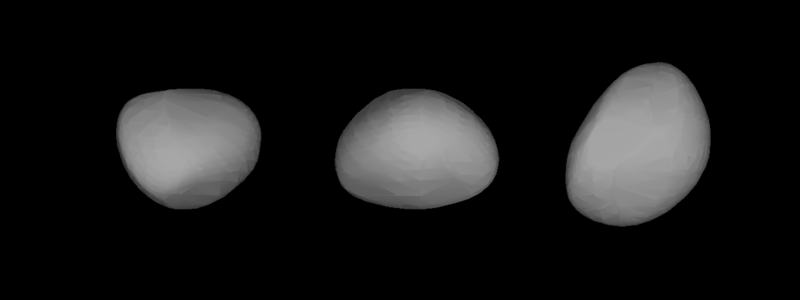
Look in the constellation of Auriga. Eunomia will pass within 1.304 AU of Earth, reaching a peak brightness of magnitude 8.2. You will need binoculars or even a telescope to observe it. Eunomia is a very large asteroid (around 270 km in diameter) in the inner asteroid belt and the largest of the stony (S-type) asteroids.
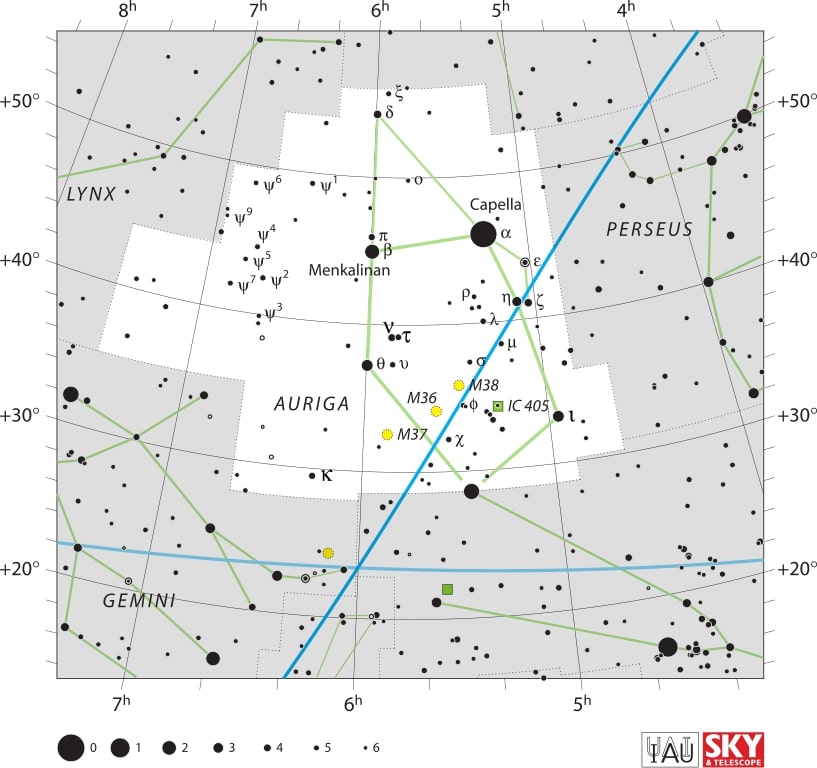
December 14: Orion Nebula at its highest point in the sky
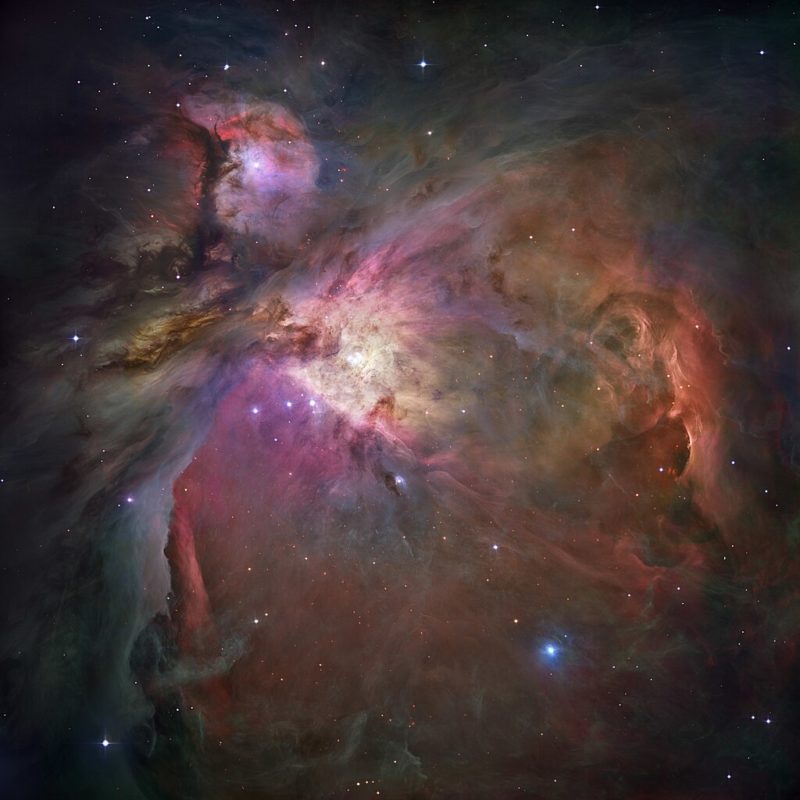
The Orion Nebula (also known as Messier 42, M42, or NGC 1976) is a diffuse nebula located south of Orion’s Belt in the constellation of Orion. It is known as the middle “star” in the “sword” of Orion. The nebula will reach its highest point in the sky at around midnight local time.
With an apparent magnitude of 4.0, the Orion Nebula is difficult to see with the naked eye unless you’re in a dark area. This is why I would recommend at least a pair of standard binoculars.
December 15: Comae Berenicid meteor shower peak
The Comae Berenicids are a small meteor shower with a zenithal hourly rate of only 3 meteors during the peak. But unfortunately, the Moon will interfere as it will be 14 days old waning gibbous at 98%.
Some meteors may also be seen between December 12 and December 23 radiating from the constellation of Coma Berenices at the fast speed of 65 km/s on average.
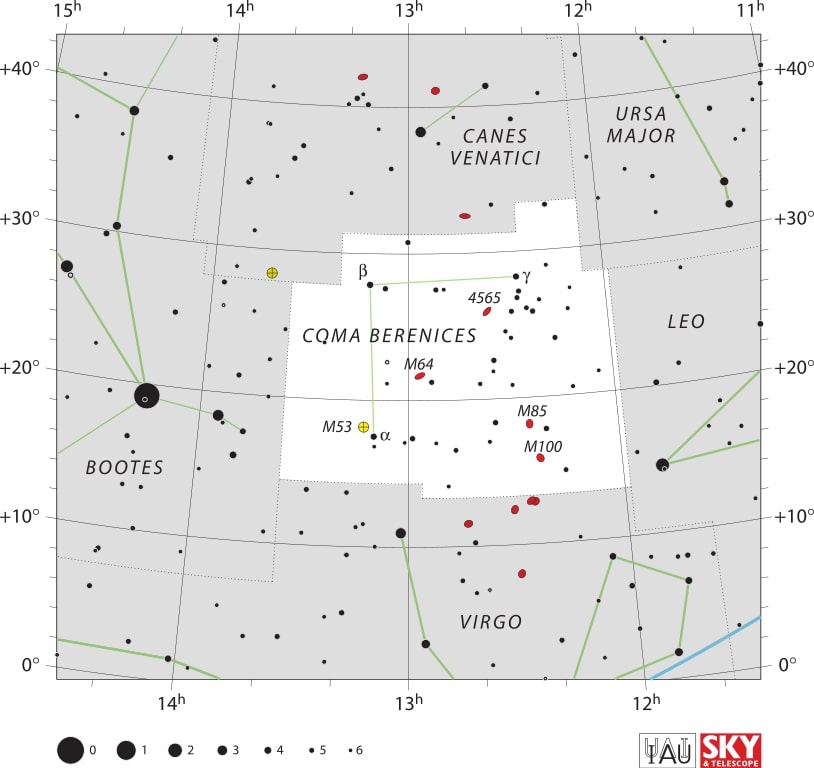
December 18: Conjunction of the Moon and Mars
The Moon and Mars will be at conjunction by sharing the same right ascension and passing within 54′ of each other.
Around the same time, the two bodies will also make a close approach (appulse) reaching 52′ from each other, but not sharing the same right ascension. In some northern territories of Canada, Greenland, eastern Russia and Alaska this distance will be so close as to lead to a lunar occultation of Mars, meaning the Moon will pass in front of Mars thereby hiding it from view temporarily.
Look for the two bodies in the constellation of Cancer. The Moon will be waning gibbous (66%) at 19 days old. (Constellation map already displayed above, when discussing Mars entering retrograde motion on December 6.) The Moon will be at apparent magnitude of -12.6, while Mars will be at magnitude -0.9.
December 20: December Leonis Minorid meteor shower peak
The December Leonis Minorids are a small meteor shower with only an average of 5 meteors per hour during the peak if conditions are perfect. The Moon will interfere somewhat as it is 18 days old waning gibbous at 74%.
Some meteors may also be seen between December 5 and February 4 radiating from the constellation of Leo Minor at the high speed of 64 km/s on average.
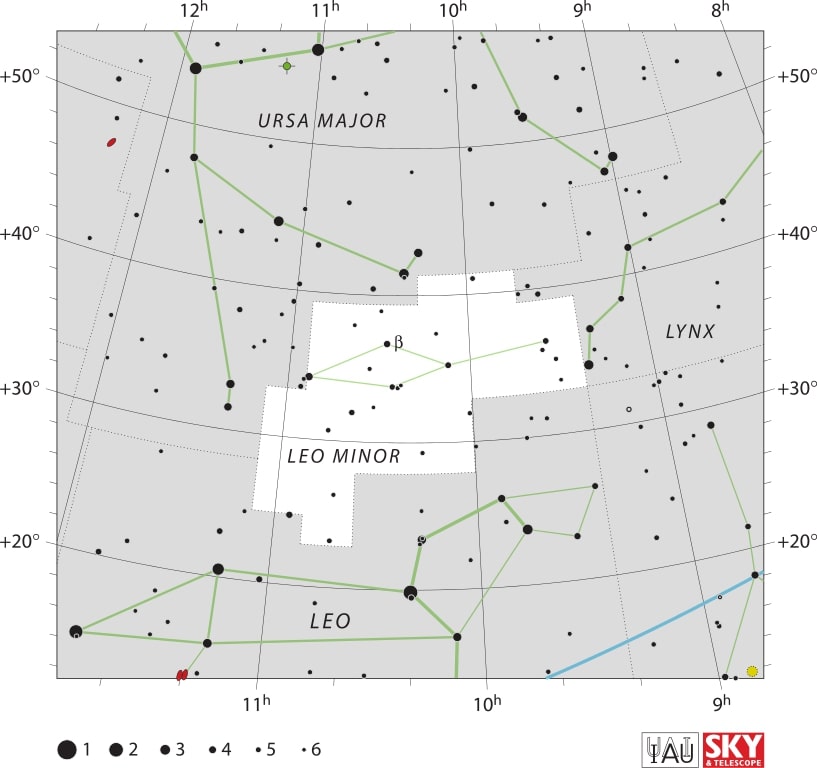
December 21: December Solstice
The December solstice will occur at 09:20 UTC. It will be the shortest day and beginning of winter in the northern hemisphere and the longest day and beginning of summer in the southern hemisphere.
December 22: Ursid meteor shower peak
The Ursids will peak with a zenithal hourly rate of 10 meteors if conditions are optimal. Unfortunately that won’t quite be the case as the Moon will offer some interference. It will be 21 days old waning gibbous at 50%.
Some meteors may also be spotted between December 17 and December 26. They will radiate from the constellation of Ursa Minor at the speed of 33 km/s on average.
The parent body of the Ursid meteor shower has been identified as comet 8P/Tuttle (also known as Tuttle’s Comet or Comet Tuttle). It is a periodic comet with a 13.6-year orbit. Interestingly in 2008, this comet has been found to be a contact binary.
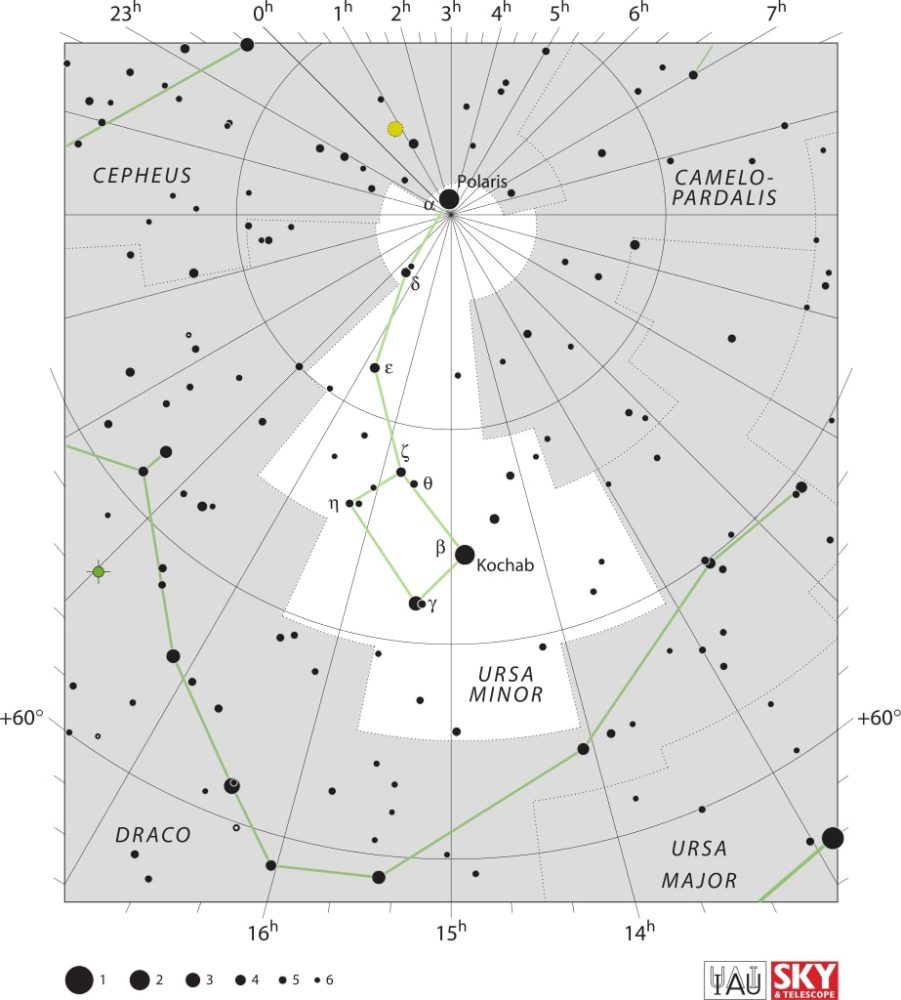
December 25: Mercury at greatest western elongation
Mercury will be at its highest point above the horizon in the morning sky, making it the best time to view the planet. Look for it low in the eastern sky just before sunrise.
It will be at apparent magnitude -0.4 in the constellation of Ophiuchus. The Moon will be 24 days old, waning crescent at 24%.
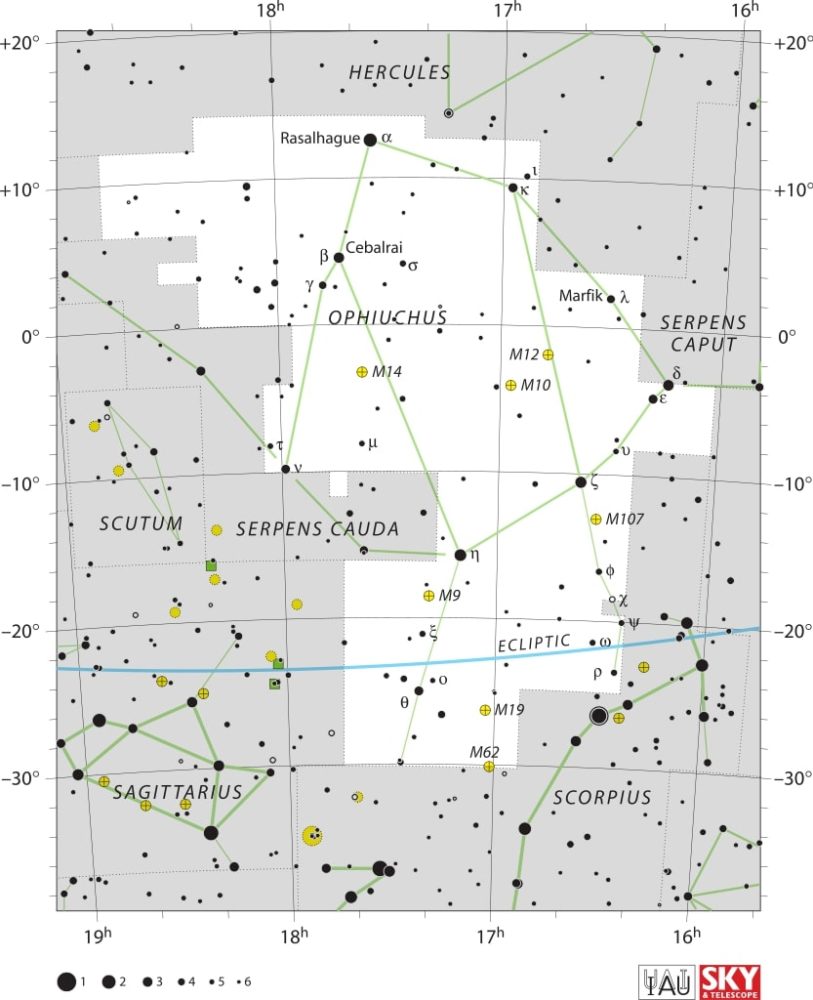
December 25: Conjunction of the Moon and Mercury
The Moon and Mercury will be at conjunction by sharing the same right ascension and passing within 6°23′ of each other.
The two celestial bodies will meet in the constellation of Ophiuchus. The Moon will be at apparent magnitude -9.0 and Mercury at -0.4. (Constellation map already displayed above, when discussing Mercury at greatest western elongation on December 25.) The Moon will be a 28 days old, very thin waning crescent at 1% and will not interfere much with stargazing this end of December 2024.
December 29: Rosette Nebula at its highest point in the sky
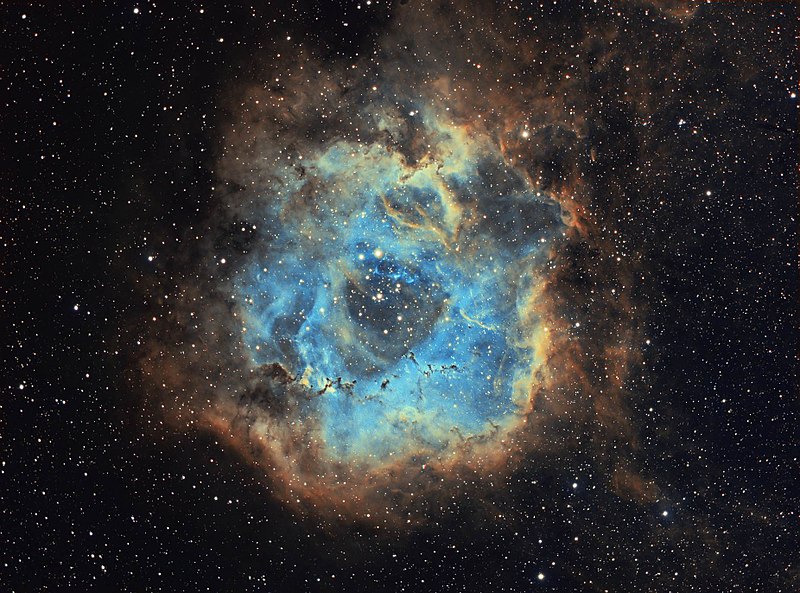
The Rosette Nebula (also known as Caldwell 49 or NGC 2237) is an emission nebula about 5200 light-years away. The nebula will reach its highest point in the sky at around midnight local time. Look in the constellation of Monoceros. (The constellation map has already been show above, while discussing the Monocerotid meteor shower peak on December 8.)
With an apparent magnitude of 4.3, the Rosette Nebula is best observed with at least a pair of standard binoculars or a telescope for more detail.
Moon Phases in December 2024
As you know, the Moon has a big impact on the visibility of celestial bodies and astronomical events in the night sky. So to help you with stargazing, here’s a calendar of the phases of Moon for this month of December 2024:
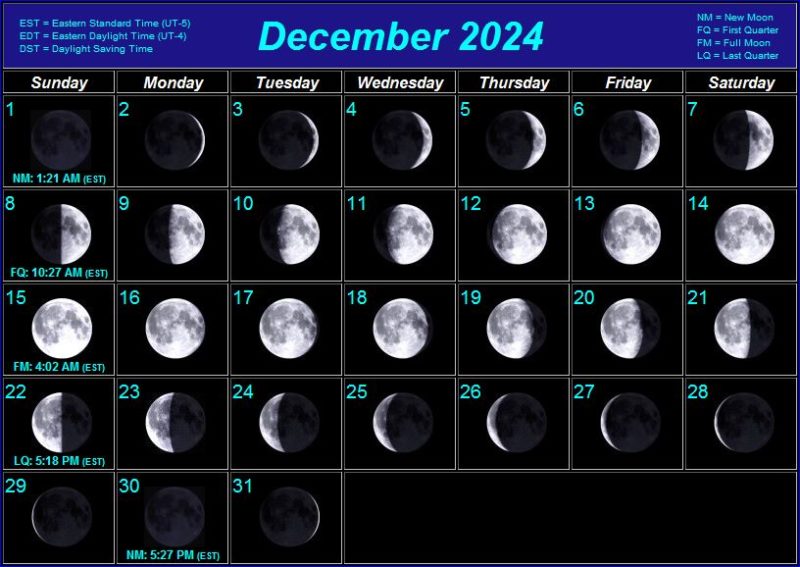
Positions of the Planets in December 2024
- Mercury: The closest planet to the Sun can be seen at dawn and dusk travelling across the constellation of Ophiuchus. This planet, being the closest to the Sun, will appear to move quickly in the night sky and its position will change in the following weeks.
- Venus: The sister planet can be seen travelling across the constellation of Sagittarius and later Capricornus. Just like Mercury, Venus can only be seen at dawn and dusk.
- Mars: The red planet can be seen in the constellation of Cancer.
- Jupiter: The gas giant is visible in the constellation of Taurus. Jupiter can easily be spotted with the naked eye, even in highly illuminated cities.
- Saturn: The ringed giant can be seen with the naked eye in the constellation of Aquarius.
- Uranus: The ice giant can be seen in the constellation of Taurus with the use of a telescope.
- Neptune: The blue giant requires a telescope pointed in the constellation of Pisces in order to be seen.
Positions of Dwarf Planets and Large Asteroids in December 2024
- Ceres: The asteroid belt’s lone dwarf planet can be seen in the constellation of Capricornus with the help of a telescope.
- Vesta: This large asteroid can be seen in the constellation of Virgo with a telescope.
- Pallas: The asteroid can be observed with a telescope in the constellation of Ophiuchus.
- Hygiea: The fourth largest asteroid can be found with a telescope in the constellation of Pisces.
- Pluto: This distant dwarf planet can be found in the constellation of Capricornus with the help of a large telescope.
Major astronomical events next month – January 2025
- January 3: Asteroid 14 Irene at opposition
- January 4: Quadrantids meteor shower peak
- January 12: Mars at perigee
- January 13: Asteroid 887 Alinda at opposition
- January 13: Comet C/2024 G3 (ATLAS) at perigee & perihelion
- January 16: Mars at opposition
- January 20: γ-Ursae Minorids meteor shower peak
- January 30: Uranus ends retrograde motion
Conclusion
December 2024 offers a spectacular array of stargazing events, from meteor showers and planetary conjunctions to nebulae at their peak visibility. Mark your calendars and prepare your telescopes for an unforgettable stargazing experience.
To ensure you don’t miss out on any celestial happenings, sign up for our newsletter to receive stargazing calendars and more updates. Clear skies!
Sources:
- Planetary ephemerides produced by NASA’s Jet Propulsion Laboratory (JPL)
- International Meteor Organization
See also:
- Previous month’s calendar: Stargazing Calendar for November 2024
- Next month’s calendar: Stargazing Calendar for January 2025
Would you like to receive similar articles by email?



